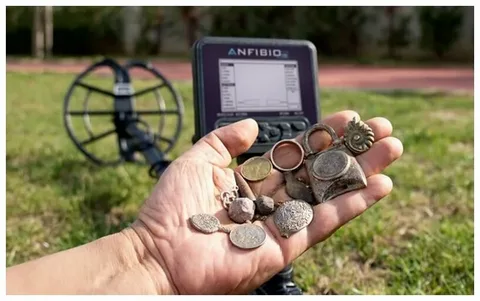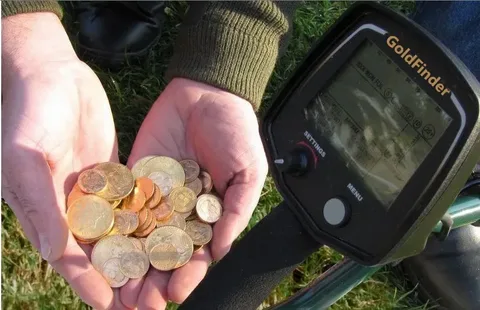Copper open pit mining has gained significant attention due to its environmental impact. As the demand for copper continues to rise, the need to understand the consequences of this mining method on the surrounding environment becomes increasingly important. In this article, we will explore the environmental impact of copper open pit mining, examining its effects on land, water, and air quality. By uncovering the potential risks and challenges associated with this method, we hope to shed light on the importance of sustainable mining practices.
Copper open pit mining can have significant environmental impacts. The process of extracting copper from open pit mines can result in deforestation, habitat destruction, soil erosion, and water pollution. Additionally, the use of heavy machinery and the transportation of ores can lead to air and noise pollution. The disposal of waste rock and tailings can also contaminate soil and water sources. Overall, copper open pit mining has the potential to cause widespread environmental degradation if not managed carefully.
Copper open pit mining can result in various environmental impacts, such as habitat destruction, deforestation, soil erosion, and water pollution. The excavation process, use of heavy machinery, transportation of ores, and disposal of waste rock and tailings can contribute to air and noise pollution. These activities can have detrimental effects on local ecosystems and surrounding communities. Additionally, the release of chemicals and heavy metals from the mining process can contaminate soil and water sources, posing risks to human health and aquatic life. Proper management and mitigation strategies are essential to minimize the environmental impact of copper open pit mining.
The Environmental Impact of Copper Open Pit Mining

Copper open pit mining has a significant impact on the environment. It involves the removal of large amounts of soil and rock, which can lead to habitat destruction and soil erosion. The use of heavy machinery and explosives can also result in noise and air pollution. In addition, the process of extracting copper from the ore requires the use of harmful chemicals, such as cyanide and sulfuric acid, which can contaminate soil and water sources. Furthermore, the disposal of waste materials, such as tailings, can result in the release of toxic substances into the environment. Overall, copper open pit mining can have lasting and detrimental effects on the surrounding ecosystem.
The Economic Benefits of Copper Open Pit Mining

Copper open pit mining can provide significant economic benefits through the creation of jobs, infrastructure development, and stimulation of local economies. The establishment of a copper mine can result in the creation of hundreds to thousands of direct and indirect jobs, ranging from mining and processing to support services such as catering, transportation, and construction. Additionally, the development of infrastructure, such as roads, power supply, and water supply, to support the mining operation can have long-lasting economic benefits for the region. This infrastructure can also support other industries and economic activities, contributing to overall economic development. Moreover, copper open pit mining can generate revenues for local governments through taxes, royalties, and other fiscal contributions. These revenues can be used to fund public services, infrastructure, and social programs, further benefiting the local community. Overall, the economic benefits of copper open pit mining can be substantial, providing a source of income and employment for local communities and contributing to regional economic growth and development.
The Technological Advancements in Copper Open Pit Mining

Copper open pit mining has seen significant technological advancements in recent years. These advancements have improved the efficiency and safety of the mining process. One such advancement is the use of advanced drilling and blasting techniques, which allow for more precise and controlled extraction of copper ore. In addition, robotic mining equipment and autonomous vehicles have been increasingly utilized in open pit mining operations, reducing the need for human miners to work in hazardous environments. Furthermore, advanced data analytics and monitoring systems have been implemented to track and optimize the performance of mining equipment, leading to increased productivity and reduced downtime. Overall, these technological advancements have contributed to the continued evolution of copper open pit mining, making it a more sustainable and efficient industry.
The Challenges of Regulating Copper Open Pit Mining

Copper open pit mining poses numerous challenges for regulators. The process of extracting copper from open pits can result in significant environmental impacts, including habitat destruction, soil erosion, and water pollution. Regulators must develop and enforce strict guidelines to ensure that mining companies adhere to environmental protection standards and minimize their impact on the surrounding area. In addition to environmental concerns, regulators also face challenges in managing the social and economic effects of copper open pit mining. The industry can bring job opportunities and economic growth to local communities, but it can also lead to displacement of residents, conflict with indigenous communities, and economic dependence on a single industry. Regulators must strike a balance between promoting economic development and protecting the rights and well-being of affected communities. Overall, the challenges of regulating copper open pit mining require a comprehensive approach that addresses environmental, social, and economic considerations. Regulatory agencies must work closely with mining companies, local communities, and other stakeholders to develop sustainable mining practices that protect the environment, respect human rights, and promote economic development.
The Future of Copper Open Pit Mining: Sustainable Practices
The future of copper open pit mining revolves around the implementation of sustainable practices. This includes reducing the environmental impact of mining operations through the use of advanced technology, implementing efficient water management systems, minimizing waste generation, and reclamation and remediation of mined lands. Additionally, there is a focus on responsible community engagement and ensuring the well-being of workers. By prioritizing sustainability, the industry can continue to meet global demand for copper while minimizing its ecological footprint.
The Social Impact of Copper Open Pit Mining in Local Communities
Copper open pit mining can have a significant social impact on local communities. This type of mining can result in displacement of indigenous people, destruction of cultural heritage, and disruption of local economies. In addition, the use of large amounts of water and the generation of waste and pollution can harm local ecosystems and threaten the health and well-being of residents. On the positive side, mining companies often provide jobs and economic opportunities to local communities. However, these benefits can be outweighed by the negative impacts of mining. It is important for mining companies to work closely with local communities to minimize negative impacts and maximize the benefits of copper open pit mining.
The Global Demand for Copper and Open Pit Mining
The global demand for copper has been increasing steadily over the years, driven by various industries such as construction, electronics, and transportation. With the rise of renewable energy and electric vehicles, the demand for copper is expected to continue growing in the future. Open pit mining is one of the most common methods of copper extraction, as it is cost-effective and allows for efficient extraction of large quantities of ore. This method involves removing the overlying rock and soil to access the ore body, which is then extracted and processed to obtain copper. However, open pit mining also comes with environmental and social challenges, such as habitat destruction, water pollution, and displacement of local communities. Efforts are being made to mitigate these impacts through sustainable mining practices and responsible resource management. Overall, the global demand for copper and open pit mining are closely intertwined, as the extraction of copper through open pit mining plays a significant role in meeting the world's increasing demand for this essential metal.
The Role of Copper Open Pit Mining in the Renewable Energy Sector
Copper open pit mining plays a crucial role in the renewable energy sector as copper is a key component in the production of renewable energy technologies. Specifically, copper is widely used in the manufacturing of photovoltaic cells for solar panels, as well as in the production of wind turbines and energy storage systems. The demand for copper in the renewable energy sector is expected to continue growing as the world shifts towards cleaner and more sustainable energy sources. This makes copper mining an essential part of the supply chain for renewable energy technologies. Furthermore, the increasing global demand for electric vehicles, which also heavily rely on copper for their production, further reinforces the importance of copper open pit mining in supporting the expansion of the renewable energy sector. Overall, copper open pit mining is a critical component in driving the development and deployment of renewable energy technologies, and it plays a significant role in advancing the transition towards a more sustainable and environmentally friendly energy landscape.
The Pros and Cons of Copper Open Pit Mining
See also: method of mining
Pros: - High production rate: Open pit mining allows for high volume extraction of copper ore, leading to a higher overall production rate. - Lower operating costs: Compared to underground mining methods, open pit mining typically has lower operating costs due to the reduced need for ventilation, support systems, and other infrastructure. - Better access to ore deposits: Open pit mining provides easier access to large, shallow ore deposits, making it easier to extract the copper ore. Cons: - Environmental impact: Open pit mining can lead to significant environmental degradation, including habitat destruction, soil erosion, and contamination of soil and water sources. - Safety concerns: The large scale of open pit mining operations can present safety hazards for workers, as well as the potential for accidents and fatalities. - Community displacement: Open pit mining often requires the relocation of communities and disruption of local ecosystems, leading to social and environmental justice issues.
The Importance of Copper Open Pit Mining for Industrial Development<
See also: coal open pit mining
/h2>Copper open pit mining is crucial for industrial development as copper is a widely-used metal in various industries. It is used in electrical wiring, plumbing, construction, and manufacturing of various products. Open pit mining allows for the extraction of large quantities of copper ore, which is necessary to meet the demand for this valuable resource. Additionally, open pit mining creates job opportunities and contributes to the local and national economy. Overall, the importance of copper open pit mining cannot be underestimated in driving industrial development and meeting the needs of various industries.

0 Comments